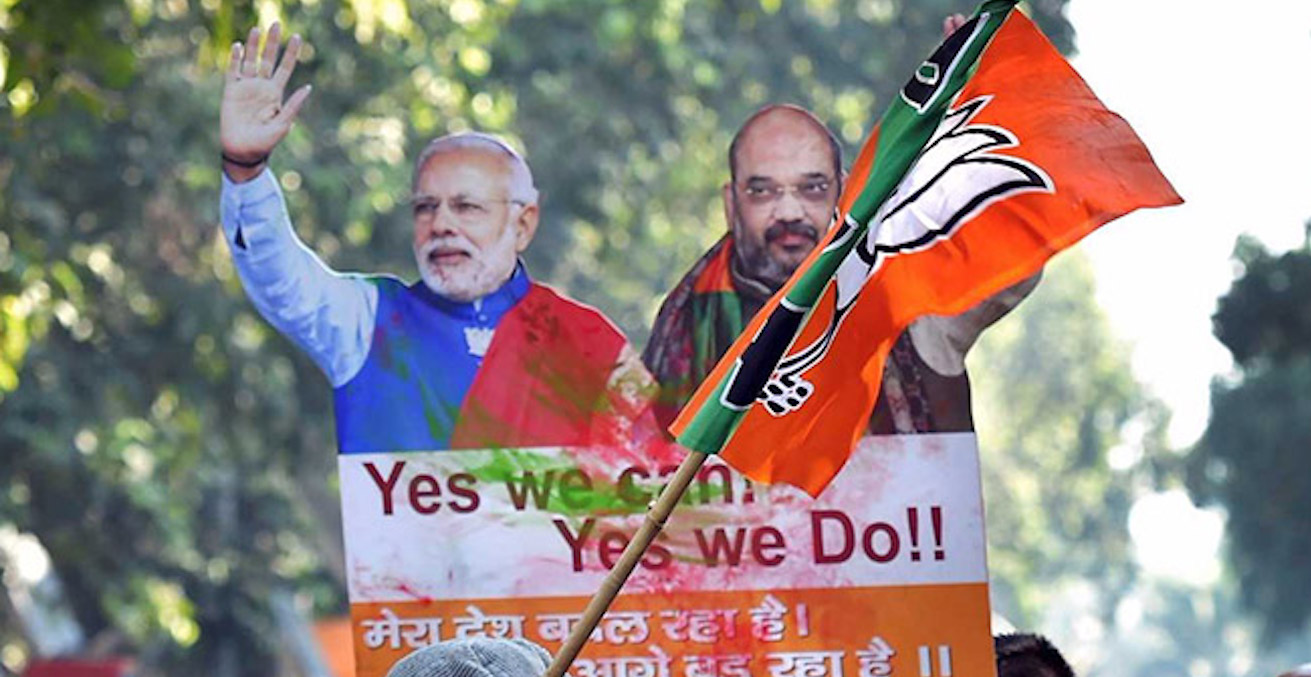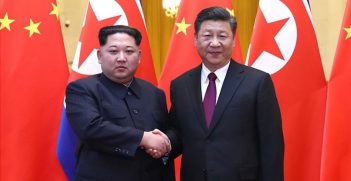The Importance of India's Remote Northeastern States

Often ignored and overlooked, India’s northeastern states are increasingly playing an important strategic role. It means that the governing BJP party is taking steps to integrate itself in this remote region.
Sandwiched between Bangladesh to the west, Myanmar to the east and Bhutan and China to the north, the northeastern states of India remain geographically isolated from the rest of the country. They are also ethnically, culturally and linguistically distinct, predominantly speaking Sino-Tibetan and Austro-Asiatic languages (around 220 of them), rather than the Indo-Aryan languages of northern India, also with a strong Christian presence.
Although the states of Northeast India are small—physically, numerically and economically—they are increasingly gaining a significant strategic value. With ASEAN engagement becoming a central pillar of India’s foreign policy direction, these states play an important role as the physical bridge between India and Southeast Asia. Due to this, there has been a renewed interest by the federal government in advancing the region’s infrastructure and capability. This can be seen in initiatives such as the Act East Policy, which places the northeastern states on the territorial frontier of the India’s eastward engagement.
China claims the northeastern state of Arunachal Pradesh as ‘South Tibet’ and other border issues have seen renewed flare-ups between the two Asian giants. This is of grave importance to India due to the northeast forming a unique and precarious geographic feature of its territory. The partition of India in 1947 left the country with only the narrow Siliguri Corridor (colloquially known as the ‘Chicken’s Neck’) connecting the northeast to the centre of the Gangetic Plain of India’s northern Hindi-speaking heartland. Chinese activity on Bhutan’s Doklam Plateau, combined with the vulnerability of the Chicken’s Neck and the potential dislocation from the Gangetic Plain, has seen the northeastern states become a pressing concern for New Delhi.
Due to the increasing importance of the northeast there has been renewed interest in its local politics, particularly from the governing Bharatiya Janata Party (BJP: Indian People’s Party) of Prime Minister Narendra Modi. Three recent state government elections in the northeast have produced results that signal the BJP’s expanding reach and the consolidation of the party’s position as the new centre of power in Indian politics.
Conventional wisdom had previously seen the ethnic, religious, linguistic and cultural terrain of the northeast as almost impossible for the BJP to penetrate. Since its formation in 1980, the BJP has been seen as an exclusively Hindu party: dominated by upper-castes (who control the symbols and rituals of Hinduism), hostile to minority groups and wedded to the Hindi-speaking “Cow Belt” across northern India. However, the ability of the party under Modi to transcend these exclusive conceptions, focus on issues of development (at least rhetorically) and broaden its cooperative appeal into a highly flexible electoral force has been remarkable. This has enabled the party to consolidate its dominance over the Congress Party, the only other national political force.
The most prominent display of this shift in power was in February’s state election in Tripura, a small hilly region of around 3.5 million people bordered by Bangladesh on three sides. The area is the traditional home to the Kokborok-speaking Tripuri people, but is now dominated by Bengali migrants pushed into the area by Partition. The state had been ruled by the Communist Party of India for 25 years; in the last election in 2013, the BJP’s candidates lost their deposits in all but one seat. Yet, in its recent campaign the BJP focused on what it called the “Three T’s —Trade, Tourism, and Training of Youth”—and astonishingly was able to secure 35 of the legislature’s 60 seats.
Despite winning enough seats to govern outright, the BJP displayed what has become an interesting facet of its approach to regional politics by forming an alliance with the Indigenous Peoples Front of Tripura to govern in coalition. The ability of the BJP to form alliances, and increasingly to secure defectors from other parties (as in both Arunachal Pradesh and Manipur), has been key to its ability to infuse itself into regions that do not directly align with the party’s Hindutva ideology. The BJP has no qualms in being a junior coalition partner to regional parties within state governments, seeing this not as slight on the party’s dignity (as Congress seems to), but as a way of integrating itself into local concerns as a stepping-stone to greater power.
Although the BJP is an ideological party—with a radical and revisionist agenda—politics in India remain predominantly transactional in nature. This provides the BJP with its greatest asset in securing support outside of the party’s core constituency. The party is increasingly seen to be the only entity that can offer smaller interest groups access to the Indian state and it has been able to develop an electoral flexibility to harness this reality.
This proved the case with the Meghalaya state election in February, where the local National People’s Party quickly secured the support of the BJP (despite mathematically being able to form a coalition without it) in order to gain emissaries to the federal government. The dominance of Christianity in the state, with three-quarters of the population, proved no obstacle to this alliance. The BJP has rapidly been able to forge a symbiotic relationship with local interests, understanding both what it provides and gains, as well as a nimble ability to reposition itself within the local political terrain.
In Nagaland, a split in the Naga People’s Front (NPF) prior to the February election saw the creation of the Nationalist Democratic Progressive Party (NDPP). Sensing a power shift and an opportunity for greater influence, the BJP abandoned its coalition with NPF and formed an electoral alliance with the newly-formed party. This alliance was able to secure enough seats to form a coalition government (although the NPF did win more seats). Like Meghalaya, Nagaland is a majority Christian state (close to 90 per cent).
From being a recent political non-entity in the northeast, the BJP now is a party of government in six of the eight northeastern states. In an historic shift, the party has placed itself as the central pole all other regional actors revolve around. The party has shown a will to power that a tired and rudderless Congress can no longer compete with. This rapid ascendency also sends a strong signal to other areas of India that remain a poor demographic fit for the BJP that the party is a flexible entity open to approach.
The BJP’s penetration into the northeast also demonstrates its comprehension of the strategic importance of the region. Political instability in the northeast has the potential to be exploited by China for its territorial claims, as well to add disruption to India’s most geographically sensitive point. So, although these states are electorally insignificant to winning federal government, the party understands it requires a strong presence in the northeast to maintain understanding, influence and control over the larger geopolitical issues that are present within it.
Grant Wyeth is a political analyst focusing on Australia and the Pacific, as well as India and Canada. He holds a Masters of International Relations from the University of Melbourne with a focus on political philosophy and development theory.
This article is published under a Creative Commons Licence and may be republished with attribution.





